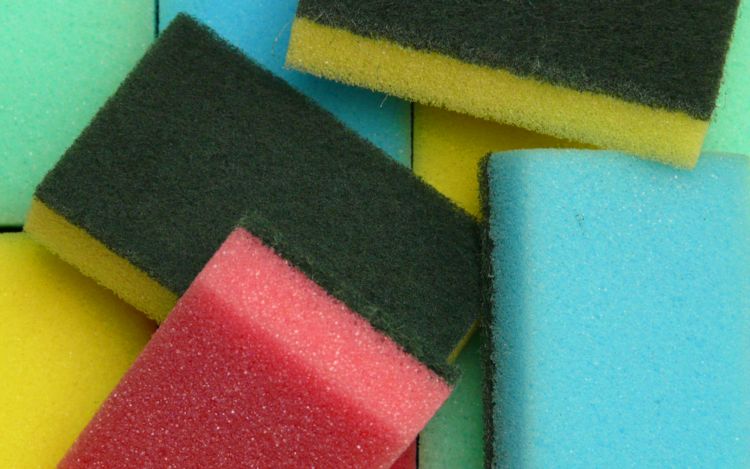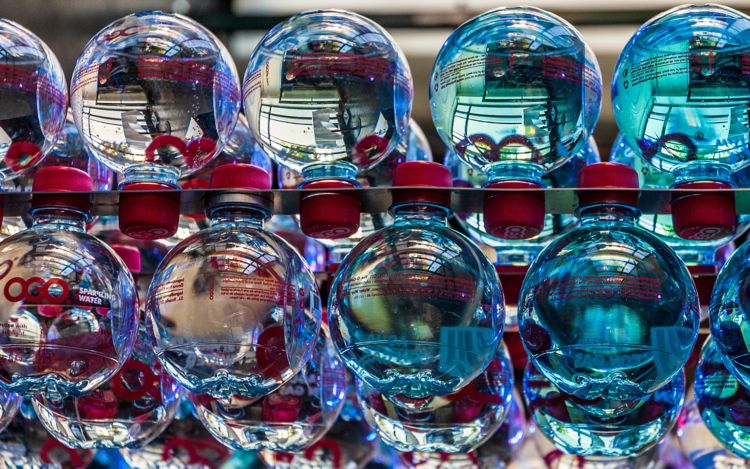NIR spectroscopy in the polymer industry: The ideal tool for QC and product screening – Part 1
2021/05/03
記事
Undoubtedly, there is a trend nowadays towards stricter quality assurance and quality control in production processes, such as in the polymer industry. At the same time, this trend is accompanied by a stronger focus on cost-saving and time-efficient methods so that performing more testing will not automatically result in higher costs.
Major driving factors for companies to voluntarily implement more testing and quality practices include:
- Cost pressure. Testing can reveal out-of-specification products, allowing production to be stopped in plenty of time, eliminating excess manufacturing costs.
- Increased competition. Quality practices provide a competitive edge and can be used as a marketing tool to raise brand value.
- Scarcity of resources. Qualified staff are difficult to find; therefore, checks that can be carried out by non-specialists are invaluable.
Near-infrared (NIR) spectroscopy is an analytical method that addresses the above drivers and is particularly suited for making quality control more efficient and cost-effective as shown in this article. A short overview of NIRS is presented, followed by application examples for the quality control of polymers, concluding with indications and examples regarding how polymer producing and processing companies can benefit from the utilization of NIRS.
NIR technology overview

The interaction between light and matter is a well-known process—just recall the last time your skin was sunburned. Depending on the applied light intensity and energy, the interaction can be destructive (as with a sunburn) or harmless (like radio waves). Light used in spectroscopic methods is typically not described by the applied energy, but in many cases by the wavelength or wavenumbers.
A NIR spectrometer such as the Metrohm DS2500 Polymer Analyzer measures this interaction between light and matter to generate spectra as displayed in Figure 1. NIRS is especially sensitive to the presence of certain functional groups including -CH, -NH, -OH, and -SH. Therefore, NIR spectroscopy is an ideal method to quantify chemical parameters like water content (moisture), hydroxyl value, acid number, and amine content, just to name a few. Furthermore, the interaction is also dependent upon the matrix of the sample itself, which allows the detection of physical and rheological parameters like density, intrinsic viscosity, and melt flow rate.

All this information is contained in just one spectrum, making this method suitable for quick multiparameter analysis. Solid samples, such as powders, are secured within an appropriate container or vial (Figure 2a) then placed as-is on the analyzer. Heterogeneous samples, such as polymer pellets, can be analyzed using larger measurement cups (Figure 2b).

Learn more about the DS2500 Polymer Analyzer here!
The measuring mode is referred to as «diffuse reflection», generally an appropriate procedure for analyzing granules, fibers, flakes, and both coarse and fine powders. For diffuse reflection (Figure 3), the NIR light comes from below the sample, penetrating and interacting with it, while being partially absorbed. Unabsorbed NIR light reflects to the detector. In less than one minute, the measurement is completed, and the results are displayed.
The procedure to obtain NIR spectra already highlights two major advantages of NIR spectroscopy: simplicity regarding sample measurement and speed.
- Fast technique with results in less than a minute.
- No sample preparation required – measure sample as-is.
- Low cost per sample – no chemicals or solvents needed.
- Environmentally friendly technique – no waste generated.
- Non-destructive – precious samples can be reused after analysis.
- Easy to operate – inexperienced users are immediately successful.
Read our previous blog posts to learn more about NIRS as a secondary technique.
NIR vs IR: What is the difference?
How to implement NIR spectroscopy in your laboratory workflow
What kinds of polymer manufacturers in the production chain might benefit from using NIR spectroscopy?
Figure 4 illustrates the individual production steps from the plastic producer, via plastic compounder and plastic converter to the plastic parts producer. The first step in which near-infrared lab instruments can be used is when pure polymers are produced, and their purity requires confirmation. NIRS is also a very useful technique for the next step, when polymers are compounded into products to be used for further processing.

A plastic part producer, typically an injection molding or extrusion company, assesses the quality of the received polymer batches. In many cases, the certificate from the supplier is trusted without any further verification. However, a rapidly growing number of companies that create products for the medical industry or that produce parts of high value or in high quantities have started to assess the important rheological quality parameters of each polymer batch before using it for injection molding or extrusion. Feeding an out-of-specification polymer to the production process leads to costly standstill of the equipment and its time-consuming cleaning.
Here, a quick pre-check of the starting polymer material used in the process would be ideal to avoid such risks and potential downtime. For this purpose, NIRS is the ideal solution because it is fast, has low running costs, and can be operated by personnel without any extensive chemical education.
When the final part is created at the end of the production process, it can also be subjected to NIR spectroscopic investigations for quality control. This is useful for assessing the homogeneity or thickness of bottles or sheets of material, for example.
What kinds of polymer applications and parameters are possible with NIRS in general?
In principle, NIRS analysis is more suitable for measuring bulk materials and not for trace analysis. Furthermore, polymer samples should contain no more than 3% carbon black and a reference method should be available. When complying with these prerequisites, NIR spectroscopy can be used as a fast and cost-saving alternative measurement technology.
The free Metrohm Application Bulletin below describes several applications for the polymer industry that can be carried out with the aid of NIRS instruments. This document contains analyses of a wide range of parameters in a very large array of samples.
Polymer analyses using near-infrared spectroscopy
Examples for use of NIR spectroscopy for selected polymers are indicated in Table 1.
| Polymer type | Parameter | Conventional analysis method | Advantage of using NIRS | Related NIRS Application Note |
| Polyethylene (HDPE/LDPE) | Density | Densimeter | Results within 30 seconds | |
| Melt Flow Index | MFI apparatus | Time-saving No cleaning of equipment |
||
| Polypropylene (PP) | Melt Flow Index | MFI apparatus | Time-saving No cleaning of equipment |
|
| Polyamide (PA) | Intrinsic Viscosity | Ubbelohde viscosimeter | No time-consuming dissolution in hazardous chemicals No waste Cost savings |
|
| COOH, NH2, Moisture | Titration | Time & cost savings No chemicals needed No chemically educated operator needed |
||
| Polyethylene terephthalate (PET) | Intrinsic Viscosity | Ubbelohde viscosimeter | No time-consuming dissolution in hazardous chemicals No waste Cost savings |
AN-NIR-023 |
| Acid number | Titration | Time & cost savings No chemicals needed No chemically educated operator needed |
||
| Isophtalic acid | HPLC | No eluent solvents needed Time & cost savings No chemically educated operator needed |
||
| Polyurethane (PU) | OH of polyols | Titration | Time & cost savings No chemicals needed No chemically educated operator needed |
|
| Isocyanate content | Titration | |||
| Polyvinyl Alcohol (PVA) | Degree of alcoholysis | Titration | Time & cost savings No chemicals needed No chemically educated operator needed |
AN-NIR-076 |
| Silicone Rubber | Vinyl content | Gas Chromatography | Time & cost savings No chemicals needed No chemically educated operator needed |
AN-NIR-084 |
| Polyvinylidene Chloride (PVDC) | Sheet thickness | Weighing | Time-saving Reduced user error risk |
AN-NIR-092 |
Save up to 90% on running costs with NIRS
Underestimation of quality control processes is one of the major factors leading to internal and external product failure, which have been reported to cause a loss of turnover between 10–30%. As a result, many different norms are put in place to support manufacturers with their QC process. However, time to result and the associated costs for chemicals can be quite excessive, leading many companies to implement near-infrared spectroscopy in their QC process.
Our free White Paper illustrates the potential of NIRS and displays cost saving potentials up to 90%.
White Paper: Boost efficiency in the QC laboratory: How NIRS helps reduce costs up to 90%
Other installments in this series
This article is only a general overview of the use of NIR spectroscopy as the ideal QC tool for the polymer industry. Other installments are dedicated to the most commonly produced and commercially important polymers and include much more detailed information. These polymers are:
Polyethylene and Polypropylene (PE & PP)
Your knowledge take-aways
White Paper: Boost efficiency in the QC laboratory: How NIRS helps reduce costs up to 90%
Near-infrared and Raman spectroscopy for polymer analysis: An introduction

Advanced techniques like Raman and near-infrared (NIR) spectroscopy enhance QC by providing rapid, nondestructive analysis. Discover how these spectroscopic techniques can optimize manufacturing and QC processes in our comprehensive e-book. Download the e-book now to unlock the full potential of NIR and Raman spectroscopy for your polymer analysis.
 情報共有
情報共有






